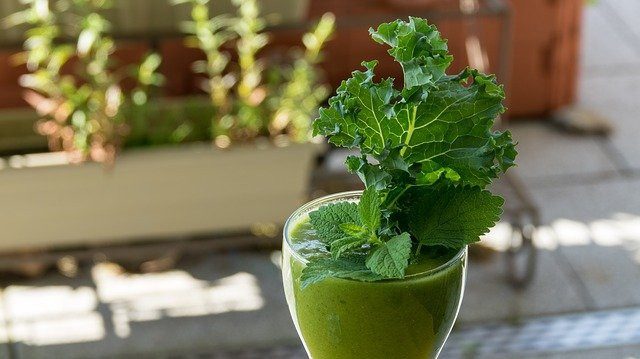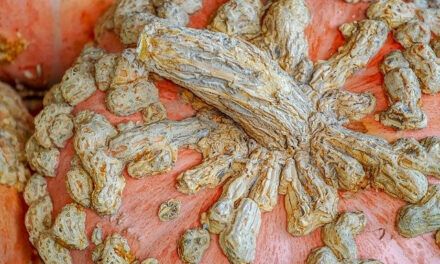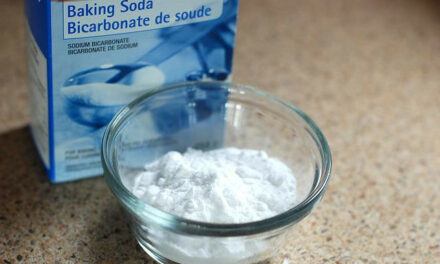In this article, we are going to look into kale and diabetes to debug myths about the effects of kale on diabetes. Kale juice is one of the popular drinks among our community, so we will be looking into kale juice in more details. For example, is kale juice good for diabetics? When kale juice is bad for you?…etc. are some of the questions and answers you can read here.
Let’s start with covering some background about diabetes and kale.
What is Diabetes?
Diabetes is a long-term disease that occurs either when the pancreas does not produce enough insulin or when the body cannot effectively use the insulin it has, as defined by the WHO. This hormone, insulin, is responsible for regulating blood sugar levels.
Out of the two types of diabetes, the first is named Type 1 diabetes, which occurs when the pancreas produces little to no insulin. The latter that occurs when the body cannot utilize the insulin effectively is called Type 2 diabetes and will be the topic of this article.
Type 2 diabetes, also named non-insulin-dependent or adult-onset, occurs when the body is ineffective in using insulin and is mainly the result of excess body weight or physical inactivity.
Some of the long-term consequences of Type 2 diabetes include damage to the heart, blood vessels, eyes, kidneys, and nerves, all of which are easily preventable (or postponed) by ensuring you’re leading an active and healthy lifestyle.
Now, let’s look into kale…
Kale, and especially kale juice, can be beneficial in maintaining a healthy lifestyle. The health effects of kale will be the topic of this article, and by the end, there will be given even more options other than kale juice that are equally as beneficial, so make sure to read on.
What is Kale?
Kale (lat. Brassica oleracea), also known as leaf cabbage, is a loose-leafed edible plant from the cabbage of the mustard family. It was domesticated about 5000 years ago and is now cultivated all around the world.
It originates from the northern Mediterranean and western Europe and is believed to have cultivated the first cabbage crop. It is mainly cultivated for the consumption of fresh leaves, but they can be eaten fresh or as a cooked vegetable when they become a valuable source of many vitamins.
But, more about kale’s nutrition value a little later…
Among other preparation ways, there are sauces and even juice. They are mentioned later in this article.
As for the external look of this vegetable, kale is quite similar to its other relatives in the cabbage order. It can grow up to 3m tall, though these tall specimens are more popular in East and Southern Africa and less so in other parts of the world.
At the base, the stem is woody, with the branches ascending from thereon.
Kale is grown either from seed or by stem cuttings, and only 4-6 weeks after planting can the first leaves be picked. It is also recommended picking old leaves, which then allows young leaves to develop.
How Nutritious is Kale?
This table shows the nutritional value of one cup of boiled kale, which translates to roughly 118 grams. The table doesn’t name it, but kale offers a range of B vitamins as well as antioxidants.
|
Energy |
42.5 kcal |
|
Carbohydrates |
6.3 g, including 1,4 g of sugar |
|
Fiber |
4,7 g |
|
Protein |
3,5 g |
|
Calcium |
177 mg |
|
Iron |
1,0 mg |
|
Magnesium |
29,5 mg |
|
Phosphorus |
49,6 mg |
|
Potassium |
170 mg |
|
Sodium |
18,9 mg |
|
Zinc |
0,3 mg |
|
Copper |
0,8 mg |
|
Manganese |
0,6 mg |
|
Selenium |
1,1 mcg |
|
Folate |
76,7 mcg |
|
Betaine |
0,4 mcg |
|
Beta Carotene |
2,040 mcg |
|
Lutein + Zeaxanthin |
5,880 mcg |
|
Vitamin A |
172 mcg |
|
Vitamin C |
21 mg |
|
Vitamin E |
1,9 mg |
|
Vitamin K |
494 mcg |
Tips for Buying and Storing Kale to Preserve Its Nutrition
Picking the best method depends on how ripe your vegetable is. When preparing fresh fruit and vegetables for storing,
- start by washing under the running water,
- then remove all the inedible parts such as seeds and stems, and
- cutting them into small blocks.
And now, here are a couple of preservation methods you can choose from.
o Salting, an old-fashioned but easy method for preserving vegetables.
Preserving salted vegetables only works if the food is kept somewhere where the temperature doesn’t exceed 50°F.
Before preparing salted vegetables, remove the unnecessary salt by letting the vegetable soak in water for a couple of hours.
o Another easy method is drying your vegetables in a gas or electric oven.
o Freezing vegetables
This can be utilized as a short-term preservation method, as the refrigerator compartment only ever reaches anything less than 32°F, which is nowhere near cold enough.
o Canning and pressure canning
These are techniques that do require a little bit of skill that comes with practice. The already mentioned method of salting has been used as a more straightforward method than canning.
There are two methods: boiling water–bath (BWB) canning and steam-pressure canning.
Choosing the suitable method depends on the acidity of your vegetable.
Is Kale Recommended for Diabetics? Does Kale Raise Blood Sugar?
Yes, kale is very much recommended for people with diabetes. Allow an elaboration…
Green vegetables are known for maintaining blood sugar levels, and kale being a green vegetable, can do that too. This is great for people with Type 2 Diabetes.
Kale is also fibre-rich, this helps to lower glucose levels by slowing down the process of sugar absorption in the bloodstream. Furthermore, intake of fiber, which kale is rich in, might help to lower the amount of sugar present in the blood as well as insulin levels.
Not only that, kale is also rich in antioxidants called alpha-lipoic acid. This acid reduces blood glucose levels and increases the body’s insulin sensitivity.
Besides these health benefits, so crucial to everyone battling diabetes, kale has many more benefits, some of which will now be further explored.
Health Benefits of Kale for Diabetics
There are even more health benefits of kale for people with diabetes than effects on blood sugar levels. Here are some more of them.
Firstly, kale is low in calories and carbohydrates, which only further proves the previously stated thesis. On the other hand, kale is filled with magnesium, and epidemiological evidence suggests that there’s a link between magnesium and diabetes.
Kale also contains anti-inflammatory agents that can prevent the process of estrogen absorption in the blood, which in turn prevents the risk of other diseases caused by diabetes.
Kale contains vitamins A and C, both of which have recently been discovered to stand in connection to Diabetes Type 2. A 2008 study discovered a link between adequate vitamin C intake and a drop in the risk of diabetes type 2.
Fruits and vegetables, in general, may reduce the risk of diabetes by preventing obesity or by providing nutrients that protect against diabetes, including antioxidants, states the research.
On the other hand, vitamin A plays an essential role in insulin production, which means that in bodies that don’t have the desired vitamin A levels, insulin production can be reduced by up to 30 per cent.
What Is Kale Juice?
Now that we’ve spoken enough about kale itself, the second part of the article will focus on kale juice.
The benefits of kale juice, and the dangers of juicing will be discussed a little later in the article. So, first, let’s discuss what kale juice is.
As evident from the name, kale juice is the juice that you get when extracting kale in a juicer, which is the fastest and easier way of juicing kale – and every other fruit or vegetable, for that matter. You may also like mixing fruits and vegetables, especially when juicing kale to masquerade the naturally bitter or sour taste of kale that doesn’t appeal to everyone.
In the next couple of sections, you can also find some kale juice recipes for everyone’s liking. Perhaps even some that will help you introduce kale to your picky eaters.
How is Kale Juice Made?
The easier way to extract kale juice is with a juicer. They usually go for around 50$, so it’s not such an expensive investment, especially if you’re a fan of natural and freshly juiced juices.
(However, there are some limitations of juicing using a ‘juicer’ that will be discussed a little later)
Even though you’d get the instruction manual with your juicer, here’s an easy step-by-step tutorial on how to make kale juice (the same procedure works for every other fruit and vegetable, I reckon).
- Start off by washing kale in some fresh water and rinse out all the possible dirt.
- Cut the ends of kale and then proceed by cutting what’s left into bite-sized pieces, not to trouble your juicer too much.
- When you turn the juicer on, don’t forget to place your cup under the spout, where the juice will flow.
- Push the kale pieces into the juicer one by one – this will get tiring, as you need quite a lot of kale pieces to make just one glass of kale juice.
You’ll need approximately 1.5 pounds of kale to make one glass of kale juice.
- Stir the juice before drinking it.
Also, try to finish the juice immediately to take in all the healthy benefits. This is because all the nutrients from fresh vegetables quickly dissolve in contact with air.
Kale Juice Recipes
One of the most popular kale juices is Aojiru, or Japanese green juice that is commonly used in Japan as a supplement. Traditionally, it’s made from kale and barley grass, and was first made by Dr Niro Endo as a response to food rationing during the war.
Not only does it taste good, but it also has a ton of health benefits.
Blending the two ingredients together can be done at home, even though there’s a wide variety of aojiru strips that can be bought.
If you’re not a fan of exotic drink such as aojiru, here are some easier to make kale juice recipes. There are no limitations when juicing. You can add all the fruits and vegetables together and create an endless number of creations. The sky is the limit.
Another great kale drink is a kale smoothie. If you want to introduce kale to your child, this is the way to go.
Smoothies can be made into smoothie bowls with many different fruits, and it is an excellent substitute for milk (benefits of which will be discussed in the next paragraph).
Other peculiar and perhaps unusual kale serving ideas include kale chips, easily made by baking kale leaves without the ribs on some olive oil for about 15-30 minutes on 275°F. Sprinkle them with your desired spices, and you’re good to go.
Health Benefits of Kale Juice
The health benefits of kale have already been discussed. Now let’s focus on the health effects of kale juice.
Firstly, kale is filled with calcium, and our bodies absorb calcium from kale quicker than from cow milk or even spinach, reports the American Journal of Clinical Nutrition. For this reason, the already mentioned kale smoothies are an excellent substitute for cow milk.
Along with calcium, kale is rich in vitamin K, which keeps the bones healthy and reduces the risk of fractures. Another significant benefit of kale juice is that it’s filled with Glucosinolate, an enzyme that not only can help prevent cancer, but also helps to battle it.
Alongside the reduction of cholesterol, kale juice helps in overall cardiovascular health. Rich in vitamin C, it is an excellent tool in boosting your immunity; Magnesium, Iron and Zinc can strengthen your body and make you feel active.
In the same line, kale juice suppresses hunger levels and can replace your dependency on a meal. These benefits combined can be a great tool in helping you lose weight.
These are only some of the health benefits of kale. There are many more that simply can’t fit on this list (including hair and skin benefits, testosterone raising benefits etc.), but you’re free to research this further.
The health benefits of kale and kale juice truly are many…
Is Kale Juice Good for Diabetics?
Kale belongs to the cruciferous vegetable family that also contains broccoli, cauliflower, cabbage and others. Because of their nutritious value, this family of vegetables is often called “super-veggies.” Because of this, kale it’s automatically one of the most nutritious, healthful foods you could ask for. So, to answer the question from the title – the answer is yes.
Kale, and especially kale juice, is beneficial for everyone battling Type 2 Diabetes. Allow me to elaborate with just a couple of examples.
Kale carries chlorophyll. A molecule of chlorophyll closely resembles a molecule of hemoglobin. Hemoglobin is the one carrying oxygen through your body. Because of their strong resemblance, chlorophyll can help oxygenate your body and balance blood sugar. This benefit is closely correlated with diabetes, as there’s an undoubtful connection between blood sugar levels and diabetes.
Supporting the previous claim is a 2016 study that concluded that intake of kale juice helps significantly in regulating the blood sugar level, and it does that by suppressing the postprandial increase of blood plasma glucose levels.
It showed that patients who drank 300 ml of kale juice daily for 6 weeks succeeded in regulating their blood glucose levels as well as improving their blood pressure levels.
When is Kale Juice Bad for Diabetics? Possible Side Effects for Diabetics
The benefits of kale juice have already been stated, yet there are some side effects to excessive juicing.
Firstly, there are some sugar-related concerns. As juice doesn’t have the fiber contained in whole fruits and vegetables, your body absorbs fructose sugar more quickly, leading to a spike in blood sugar levels. This is, of course, detrimental for people with diabetes.
The fiber can also make you feel full, so you might take in more calories through juice than you would by eating fruit and veggies. This is where kale comes in – try to juice fruit and vegetables together, as the vegetable will reduce the calories and sugars.
This also connects to juice fasting, i.e. drinking only juice for extended periods of time. Even if it might sound good, doctors don’t advise it.
This sugar intake might also lead to dental issues in the long term.
And, another significant problem with juicing might be health issues with people on medication. Kale, for example, is rich in vitamin K, which can interact negatively with those on blood-thinning medication such as warfarin.
How Often Should You Drink Kale Juice?
Considering all the health benefits of kale already stated in the article, you might be thinking there’s never too much kale. Well, that thought is wrong.
Some side effects from too much kale will be discussed in the next paragraph, but now let’s try to decide on what should be your daily dose of kale.
Yes, kale is completely safe to drink every day, as long as it’s not overdone. For it to have health benefits for your body, you actually only need 3.4 cups per week. A cup of kale only has 34 calories, so only kale won’t be anywhere near enough.
Other Safe Vegetable Juices for Diabetics Other Than Kale Juice
Now that we’ve explored the possibilities that kale might not be for you, here are 5 other great juices that you can take in instead of kale juice, alongside with some common criteria you can follow to decide which one fits you best.
|
1 cup |
Calories |
Carbs |
Fiber |
Protein |
Fat |
GI |
|
Celery juice |
42 kcal |
9,46 g |
3,8 g |
1,96 g |
0,38 g |
15 |
|
Carrot juice |
94 kcal |
21,92 g |
1,9 g |
2,24 g |
0,35 g |
40 |
|
Tomato juice |
41 kcal |
10,30 g |
1 g |
1,85 g |
0,12 g |
38 |
|
Cucumber juice |
68 kcal |
4 g |
0 g |
0 g |
0 g |
15 |
|
Beet juice |
91 kcal |
21,29 g |
4,7 g |
2,57 g |
0,25 g |
35 |
Conclusion
Kale really is a versatile vegetable. As it belongs to the cruciferous vegetable family, and is a green vegetable alongside that, it really has many perks. In the first half of the article, fresh kale and the health benefits it offers have been discussed. And, in the second half, the focus was on kale juice as a more beloved way of kale intake.
From aojiru to kale smoothies, all of them have health benefits too. And some risks that need to be taken into consideration, too. These risks have been discussed by the end of the article and might be the most relevant part to read through.
Regardless, it is a good idea to have at least 3 glasses of kale juice per week if your diabetes is under control – or, if not kale, find your substitute vegetable juice in the last section of this article.













